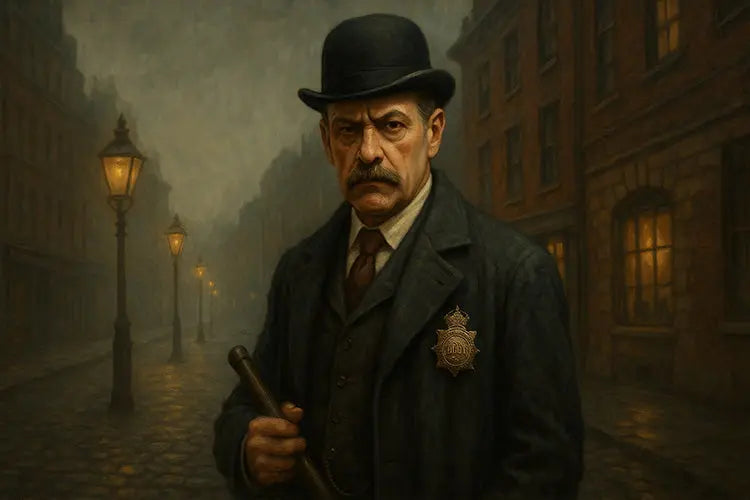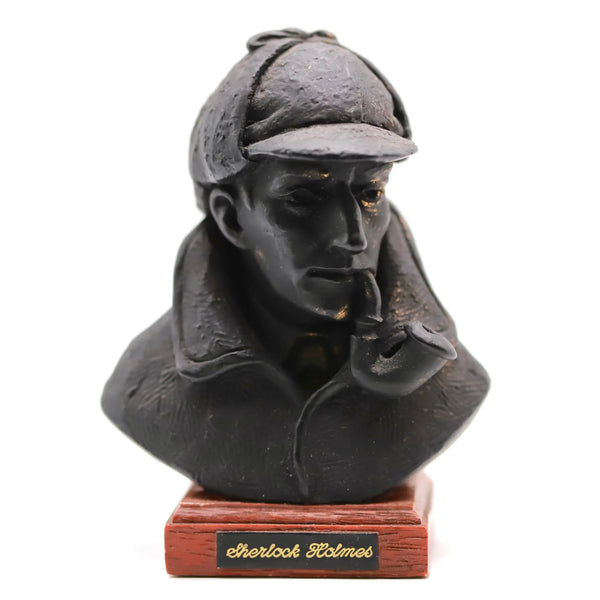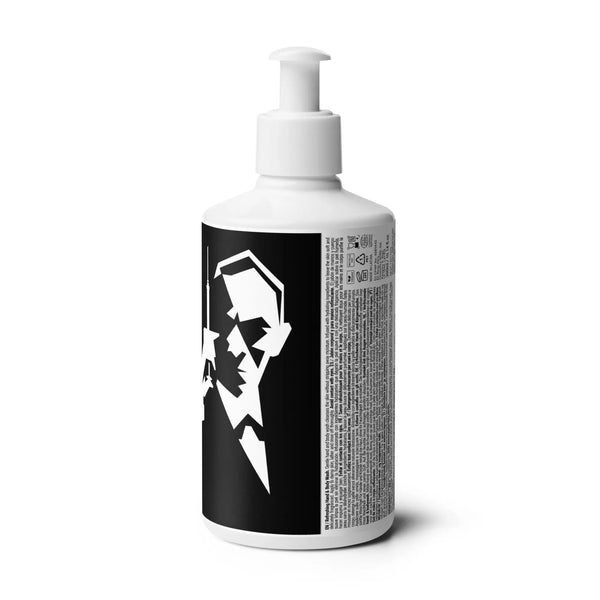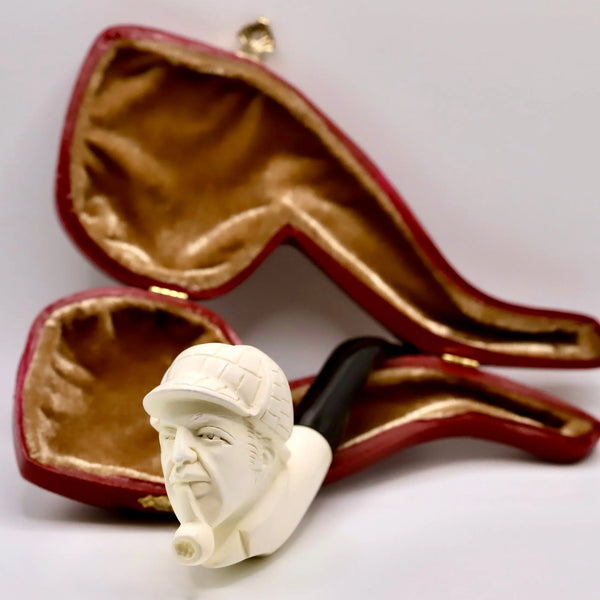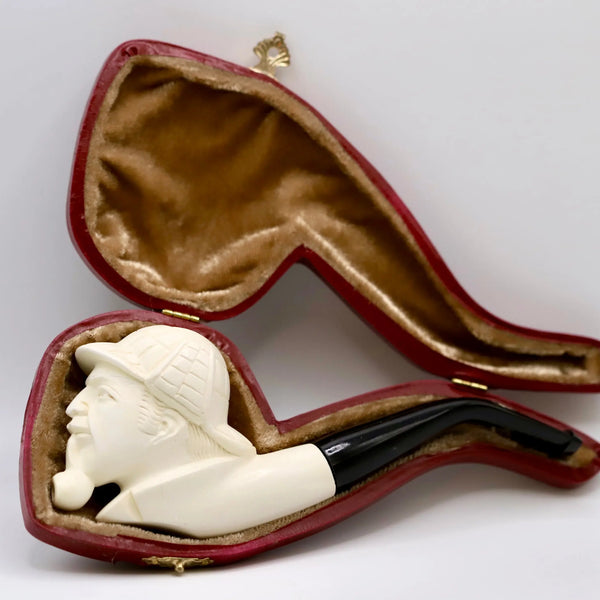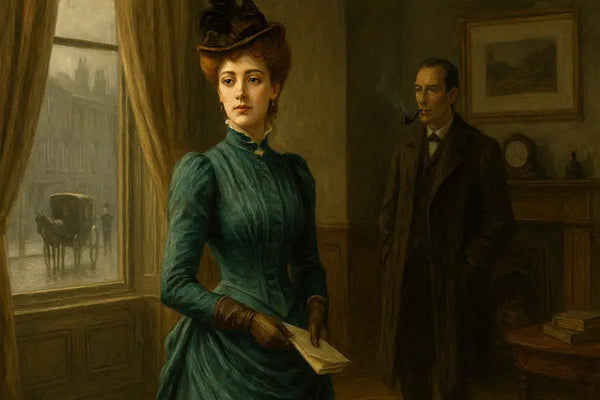In the fog-shrouded streets of Victorian London, England, where criminal investigation balanced precariously between traditional police methods and revolutionary detection techniques, one figure stood as the bridge between institutional law enforcement and private consulting: Detective Inspector Joseph Alexandre Lestrade, a fictional character created by Conan Doyle, of Scotland Yard.
Though Conan Doyle's Lestrade is described as a “little sallow rat-faced, dark-eyed fellow,” this lean ferret-like man would prove to be one of the most enduring characters in the entire canon. Inspector Lestrade represents the embodiment of Victorian policing itself, showcasing both the steadfast determination and institutional limitations that defined official criminal investigation during the era of the world’s greatest detective, Sherlock Holmes of Baker Street.
Summary
• Victorian Police Embodiment: Detective Inspector Lestrade represents the institutional approach to criminal investigation, embodying the Victorian police force and showcasing both the strengths and limitations of official Scotland Yard procedures in contrast to Holmes’s innovative methods.
• Distinctive Characterisation: Conan Doyle, the writer of the Sherlock Holmes stories, provides vivid descriptions that paint Lestrade as a “ferret-like man, furtive and sly looking,” yet beneath this unprepossessing exterior lies a dogged determination that eventually earns recognition.
• Professional Evolution: From his first adventure with Holmes, Lestrade transforms through multiple case collaborations from a skeptical rival who dismisses Holmes’s methods to a pragmatic ally who learns to value unconventional approaches to detection.
• Enduring Screen Presence: Adaptations have reimagined Lestrade from comic relief to competent professional, with portrayals ranging from bumbling bureaucrat to capable investigator worthy of Holmes’s partnership.
Character Genesis and Literary Purpose
Conan Doyle’s creation of Inspector Lestrade served multiple strategic narrative purposes beyond simply providing Holmes with a police contact. Lestrade is a fictional character appearing in multiple Holmes stories, functioning as a measuring stick for Holmes’s abilities whilst representing the institutional validation that legitimises the consulting detective’s work with official authorities.
Unlike the higher echelons of government where Mycroft Holmes wielded influence, Lestrade operated at the practical level of criminal investigation. This positioned him perfectly to witness Holmes’s methods firsthand and provide street-level credibility to the detective’s theories.
The choice to make Lestrade a recurring character rather than using different officers in each story demonstrates Doyle’s sophisticated understanding of character development. By allowing the same police officer to witness Holmes’s methods repeatedly across the stories written by Conan Doyle, the author could show gradual change and learning, making the inspector’s eventual respect for Holmes more meaningful than simple episodic admiration.
Physical and Personality Traits
Conan Doyle's physical descriptions of Inspector Lestrade are notably unflattering yet serve important characterisation purposes. The repeated references to his "rat-faced" appearance and "ferret-like" manner initially position him as somewhat unsympathetic, reflecting Victorian class prejudices and the tendency to associate physical characteristics with moral qualities.
The description of Lestrade as a "man furtive and sly looking" creates initial reader suspicion about his motives and competence. However, this appearance proves deceptive—beneath the unprepossessing exterior lies genuine dedication to justice and surprising adaptability.
Watson observes that despite his rodent-like features, Lestrade possesses admirable tenacity and professional pride. The inspector's determination to solve cases, even when his methods prove inadequate, earns grudging respect from both Holmes and readers.
Case Collaborations and Story Analysis
Inspector Lestrade’s debut in “A Study in Scarlet,” the first novel featuring Holmes and Lestrade, establishes both his competence within conventional parameters and his limitations when confronting unusual crimes. His initial investigation follows standard police procedures yet fails to penetrate the case’s deeper mysteries, creating the opportunity for Holmes to demonstrate superior methods.
In the short story “The Boscombe Valley Mystery,” Lestrade shows greater willingness to collaborate with Holmes whilst maintaining professional skepticism. This short story demonstrates the inspector’s learning curve as he begins to appreciate unconventional approaches without abandoning his institutional responsibilities.
“The Six Napoleons” represents perhaps the finest example of Holmes-Lestrade collaboration, with the inspector contributing valuable police resources whilst Holmes provides analytical insight. This short story shows Lestrade at his most effective, combining official authority with openness to innovative techniques.
The inspector’s involvement in “The Final Problem” demonstrates his genuine concern for Holmes’s welfare and his recognition of the detective’s importance to criminal justice. When Holmes faces the Moriarty threat, Lestrade’s offer of police protection reflects both professional courtesy and personal regard developed through years of collaboration in their many adventures.
Professional Methods and Capabilities
Inspector Lestrade's investigative approach represents the best of traditional Scotland Yard methodology, emphasising systematic procedures, witness interviews, and methodical evidence collection. His strength lies in organising large-scale investigations, coordinating with other police units, and maintaining official documentation that ensures legal admissibility of evidence.
The inspector excels at bureaucratic navigation and institutional knowledge that proves invaluable in complex cases. His understanding of police procedures, legal requirements, and administrative necessities provides practical support that Holmes's more informal methods sometimes lack.
Lestrade's weakness lies primarily in analytical reasoning and imaginative leaps that characterise Holmes's deductive methodology. He tends to focus on obvious suspects and conventional motives, sometimes missing subtle clues or unconventional solutions that become apparent through Holmes's innovative approach.
However, the inspector demonstrates admirable learning capacity, gradually incorporating elements of Holmes's methods into his own investigations. This adaptation shows professional flexibility and genuine commitment to improving his effectiveness rather than simply defending traditional approaches.
Adaptations Across Media
Early film and television adaptations often portrayed Inspector Lestrade primarily for comic relief, emphasising his limitations whilst downplaying his competence and character development. Dennis Hoey’s portrayal in the 1940s Basil Rathbone films became highly influential, establishing a somewhat buffoonish interpretation that persisted for decades. Many of these adaptations drew inspiration from the original Sherlock Holmes novels and short stories by Arthur Conan Doyle, which established the detective genre and featured Lestrade as a recurring character.
The Granada Television series featuring the definitive Holmes offered more nuanced treatment through Colin Jeavons’s portrayal. This interpretation captured both Lestrade’s institutional limitations and his genuine competence within appropriate spheres, creating a more faithful adaptation of Doyle’s characterisation.
Rupert Graves’s interpretation in the BBC’s modern television adaptation, where Sherlock Holmes is portrayed by Benedict Cumberbatch, successfully updated the character for contemporary audiences whilst maintaining his essential function. This version emphasises Lestrade’s professionalism and growing appreciation for Holmes’s methods without sacrificing his distinct personality.
Modern adaptations have generally moved away from purely comic interpretations towards more respectful treatment that acknowledges Lestrade’s professional competence. This evolution reflects changing attitudes towards police work and greater appreciation for collaborative rather than competitive relationships between official and private investigators.
Comparative Analysis with Other Officers
Inspector Gregson serves as Lestrade's primary rival within Scotland Yard, representing a different approach to traditional police work. Whilst both men operate within conventional frameworks, Gregson tends toward more aggressive tactics whilst Lestrade favours methodical persistence.
Lestrade's superior adaptability becomes apparent through his greater willingness to learn from Holmes's methods. Whilst Gregson often remains skeptical of unconventional approaches, Lestrade demonstrates intellectual flexibility that enables professional growth. This difference explains why Lestrade becomes the more prominent recurring character.
Legacy in Detective Fiction
Inspector Lestrade established the template for the institutional detective figure who collaborates with private investigators whilst maintaining distinct professional identity. This archetype appears throughout subsequent detective fiction, from police officers who work with amateur sleuths to FBI agents who partner with consulting experts.
The character's evolution from skeptical rival to respectful colleague has become a standard pattern in detective partnerships. Many modern crime series feature similar relationship arcs, with official investigators gradually learning to appreciate unconventional methods whilst contributing their own institutional expertise.
Academic Holmes scholarship recognises Lestrade as one of Doyle's most successful supporting characters, noting his realistic portrayal of institutional constraints and personal growth. His character demonstrates sophisticated understanding of how organisations and individuals can adapt whilst maintaining core identities.
Conclusion
Inspector Lestrade stands as one of literature's most successfully realised supporting characters, embodying the tension between institutional procedures and innovative methods that defines much of detective fiction. His evolution from skeptical rival to respectful colleague demonstrates both character development and the possibility of institutional adaptation without fundamental compromise of professional integrity.
The inspector's enduring appeal lies in his representation of honest, dedicated public service that recognises its own limitations whilst striving for improvement. For Holmes devotees, the inspector represents the human face of official law enforcement, showing how institutional representatives can maintain professional dignity whilst acknowledging superior expertise.
Frequently Asked Questions
In how many original Sherlock Holmes stories does Inspector Lestrade appear?
Inspector Lestrade appears in thirteen of Conan Doyle's original Sherlock Holmes stories, making him the most frequently appearing police officer in the canon. His appearances span from "A Study in Scarlet" (1887) through "The Adventure of the Three Garridebs" (1924), demonstrating his continued importance throughout the series' publication history.
How does Inspector Lestrade's detective work compare to Holmes's methods?
Inspector Lestrade employs traditional Scotland Yard methods emphasising systematic procedures, witness interviews, and conventional evidence collection, whilst Holmes uses innovative scientific deduction and psychological analysis. Lestrade excels at bureaucratic organisation and legal procedures but lacks Holmes's analytical imagination and ability to perceive subtle patterns that conventional investigation might miss.
What does Conan Doyle mean by describing Lestrade as "ferret-like"?
Doyle's description of Lestrade as "ferret-like" and "rat-faced" initially suggests a somewhat untrustworthy appearance, reflecting Victorian tendencies to associate physical characteristics with personality traits. However, these descriptions prove deceptive, as Lestrade's actual character demonstrates the tenacity and persistence associated with these animals rather than negative qualities.
Which actors have most memorably portrayed Inspector Lestrade?
Notable portrayals include Dennis Hoey in the 1940s Basil Rathbone films, Colin Jeavons in the Granada Television series with Jeremy Brett, and Rupert Graves in the BBC's modern "Sherlock" series. Each interpretation reflects its era's approach to the character, evolving from comic relief to serious professional collaboration with Holmes.
